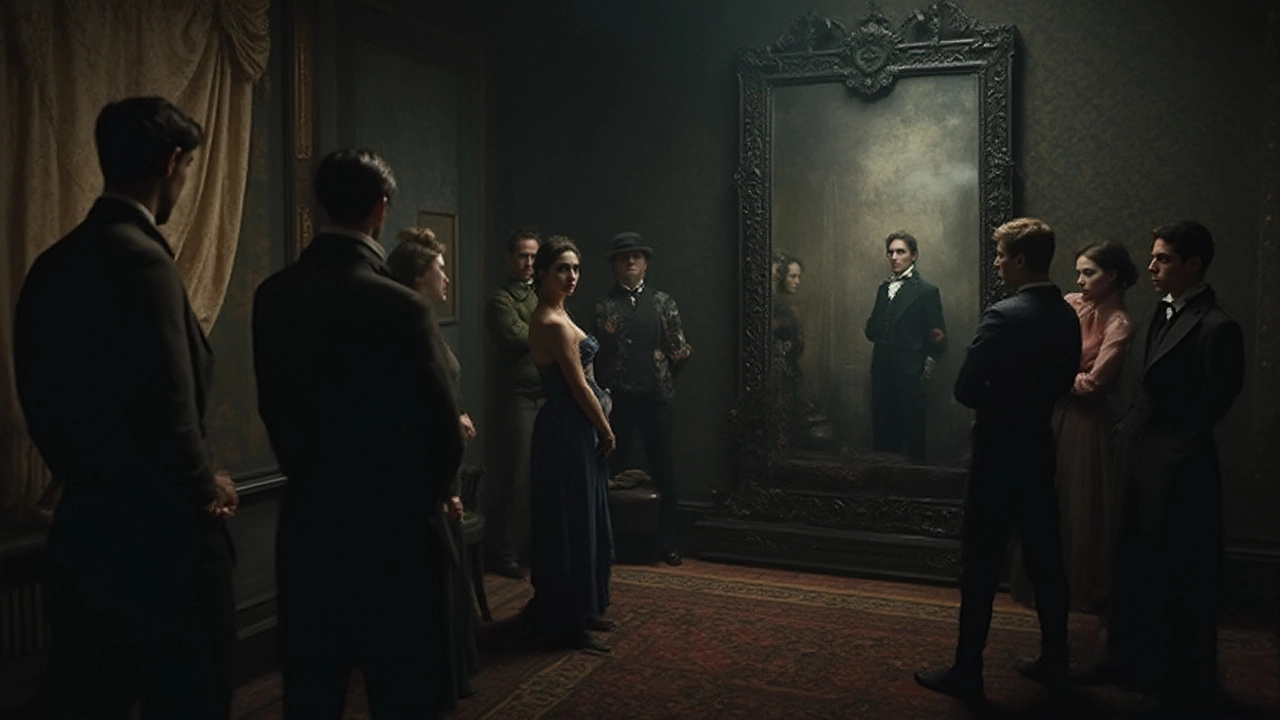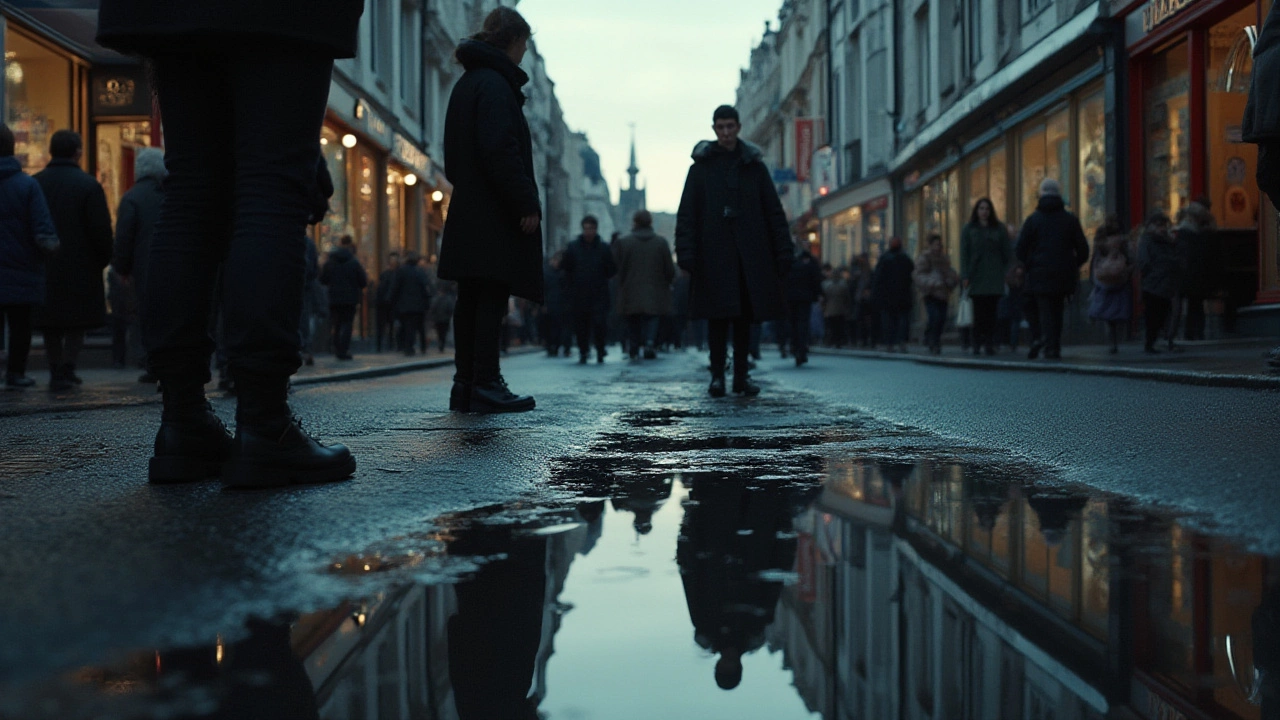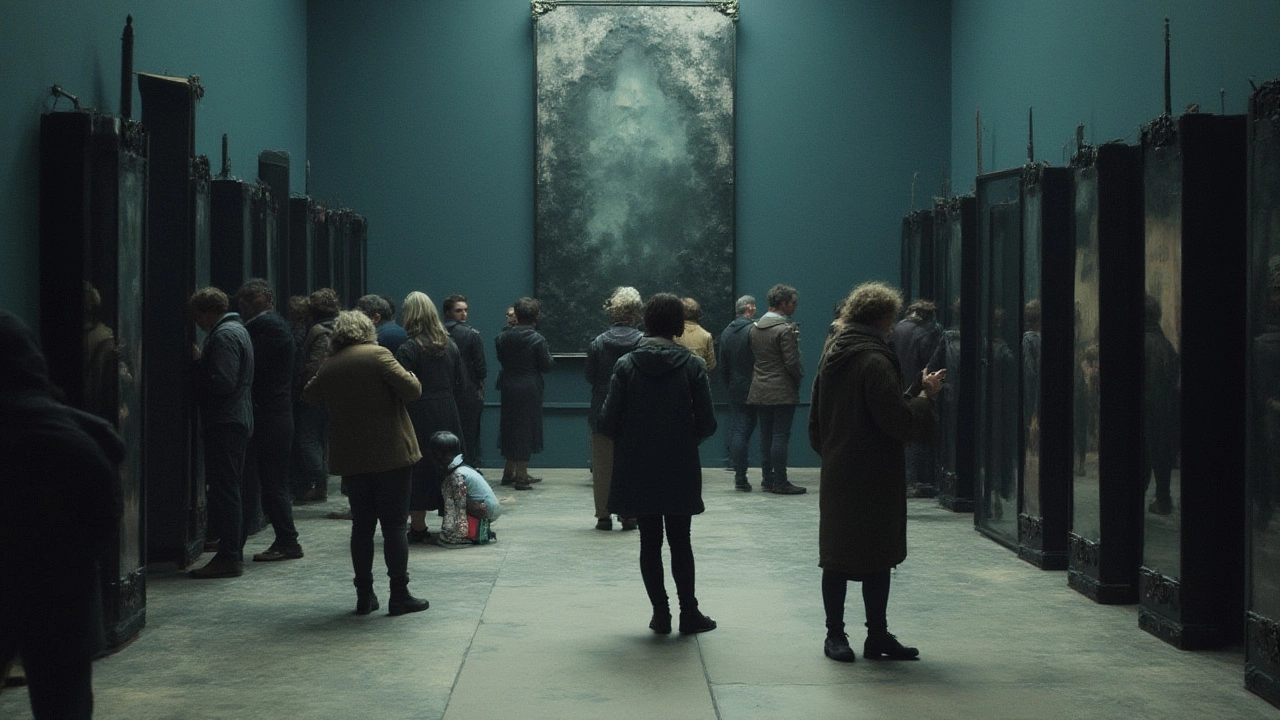The Disturbing Truth Behind the Black Mirror: Psychology, Folklore, and Modern Obsession

Ever stare into what looks like a bottomless black pool—a black mirror—only to feel a chill run down your spine? There’s something about these smooth, light-swallowing surfaces that just creeps people out. The experience isn’t just a modern thing or a quirk of horror films. Black mirrors have messed with our heads for centuries. Sit with one long enough and your mind starts conjuring things: your own face warping, shadowy shapes moving behind you, a rising sense that you’re being watched. Why do they freak us out so much? Forget Hollywood for a second. This uncanny feeling runs deep, tied to the way our brains work, to stories our ancestors told, and even to what modern science has discovered about perception and fear.
What Makes Black Mirrors So Unsettling?
Let’s cut to the chase. Black mirrors are just mirrors with a dark surface—sometimes obsidian, sometimes glass painted black on one side. Unlike regular mirrors, they don’t bounce every detail back at you. Instead, they swallow light, only giving you a murky version of your own reflection. The result? Your brain tries to fill in the gaps, and the imagination goes wild, usually not in a fun way.
Scientists say people are hardwired to recognize faces—even where there are none. It’s called pareidolia. When the lighting is low and the details are fuzzy (exactly how a black mirror works), your mind will create shapes, features, or even other figures out of the dimness. This was proven in a 2010 University of Urbino study, where volunteers stared into a mirror in a dimly lit room. After about a minute, half reported seeing their faces change, and some witnessed “monstrous” features or strange presences. All this, just from gazing at your own reflection!
But there’s more going on. Black mirrors don’t just hide details—they invite your brain to project fears, memories, or even subconscious worries onto that blank, bottomless screen. In a world stuffed with distraction, a black mirror forces you to be alone with your thoughts and the creeping shadows of your imagination. And unlike the screen of a switched-off phone, which is also a kind of black mirror, these artifacts don’t offer a sense of control or context. Besides, the ancient look and ceremonial weight of some black mirrors make them feel less like a household item and more like an object that might carry a curse.
If you want to experience this for yourself, here’s a non-creepy tip: dim the lights, hold a black mirror up to your face, and stare for 2 minutes. Notice how quickly your features seem to melt or shift—even a blink can make you jump. This reaction isn’t supernatural; it’s a cocktail of biology and suggestion. But just because it’s all in your head doesn’t make it feel any less real in the moment.

Black Mirrors in Folklore, Magic, and Popular Culture
Here’s where things get wild. Black mirrors pop up in ghost stories, occult traditions, and even royal history. Way back in the Elizabethan era, John Dee—the famous advisor to Queen Elizabeth I—used a black obsidian mirror for “scrying,” or seeing visions. He thought he could use it to talk to spirits and angels. That same mirror is now locked up in the British Museum, but lots of people around the world collect similar objects for mystical reasons. They go by names like “scrying mirror” or “psychomanteum.” This isn’t just a European thing; ancient Aztecs used obsidian mirrors in rituals too, believing they could see the future or communicate with gods.
People have always thought mirrors, especially dark or black ones, could be portals to other realities (or at least to the spirit world). In folklore from Russia to Ireland, mirrors are often covered during funerals so the soul of the dead won’t get trapped or lost in the reflection. In China, antique mirrors are sometimes kept away from bedrooms because they’re said to attract ghosts, with dark glass considered especially risky.
Fast forward to today and mirrors—and especially black mirrors—have become a horror staple. You’ve got everything from “Candyman” to “Oculus” built on the idea that something evil watches you from the glass. That’s not an accident. Our brains already freak out at dark, shifting reflections, so filmmakers use black mirrors as shortcuts to instant unease. When you see your face stretching and fading in the dark surface, you know something’s not right, even if nothing terrifying happens.
Want a practical tip? If you’ve got a black mirror in your house for decoration or nostalgia, keep it in a spot with some ambient light, not dead darkness. If you’re hosting a Halloween party, place it at the end of a hallway with a single, low lamp behind the viewer—watch guests shiver as the mirror plays tricks on their eyes. For believers in the mystical, some say you should cleanse a black mirror regularly by wiping it with salt water to keep away “bad energy”—but that’s more about old tradition than visual psychology.
| Era | Use | Culture |
|---|---|---|
| Ancient Aztec | Ritual, foresight, talking with gods | Mesoamerica |
| Elizabethan | Scrying, communicating with spirits | England |
| Modern | Decor, horror films, meditation | Global |

How Black Mirrors Reflect Modern Anxieties
There’s an ironic twist here. Today, the black mirror has taken on a new meaning thanks to our tech-obsessed lifestyles. Every time you glance at your phone or a dormant laptop, you’re literally looking into a black mirror. The creator of the hit show “Black Mirror” named it after this idea—screens reflecting our fears back at us, both personal and collective. We’re all just a little uncomfortable with what stares back when the screen is off. It makes you wonder if the line between ancient scrying rituals and doomscrolling late at night is thinner than we want to admit.
But back to the physical mirror for a second. In our time-pressured, high-stimulus world, black mirrors have found a new job—self-reflection, sometimes literally. Some therapists now use “mirror-gazing” techniques, based on Victor Jan’s 1990s psychomanteum experiments, in which patients sit with a dimly lit black mirror to confront fears, loss, or even to process grief. This approach borrows from ancient rituals but retools it as a way to get people thinking honestly about what scares them. It turns out the haunting, strange effect of a black mirror is a pretty direct route to your own subconscious. But it also comes with a warning: mirror gazing can get freaky fast, so it’s usually taught in a controlled setting.
Try it for yourself: Next time you need a break from screens, grab a black mirror, kill the lights, and just observe. Stick with it past the initial weirdness, and you might find it’s a shortcut to facing what really freaks you out—not ghosts, but your own mind. Some modern artists are even using black mirrors as a metaphor for self-exploration, creating installation works that force viewers to question what’s real and what’s imagined in the reflection. The obsession with black mirrors is getting stronger because, deep down, we’re all looking for meaning in the void—and, truthfully, a bit of a thrill.
For those interested in collecting, there’s a small but growing market for ornate black mirrors. Antique stores sometimes stock them, but you can make your own with an old frame and a piece of glass painted black on the reverse side. Artists and enthusiasts suggest experimenting with different sizes and tints—the darker, the creepier the effect. Just remember, don’t expect magic. The real chills come from what your mind brings to the table, not what’s hiding behind the glass.
The upshot? The black mirror keeps scaring us because it’s not just an object—it’s an experience. Whether you’re staring at a slab of obsidian once used by shamans, squinting at your phone screen in the dead of night, or nervously glancing at a moody piece of decor, that feeling you get is the same. It’s the uneasy sense of seeing yourself—and maybe something else—staring back. That’s the real magic trick, and it never really gets old.